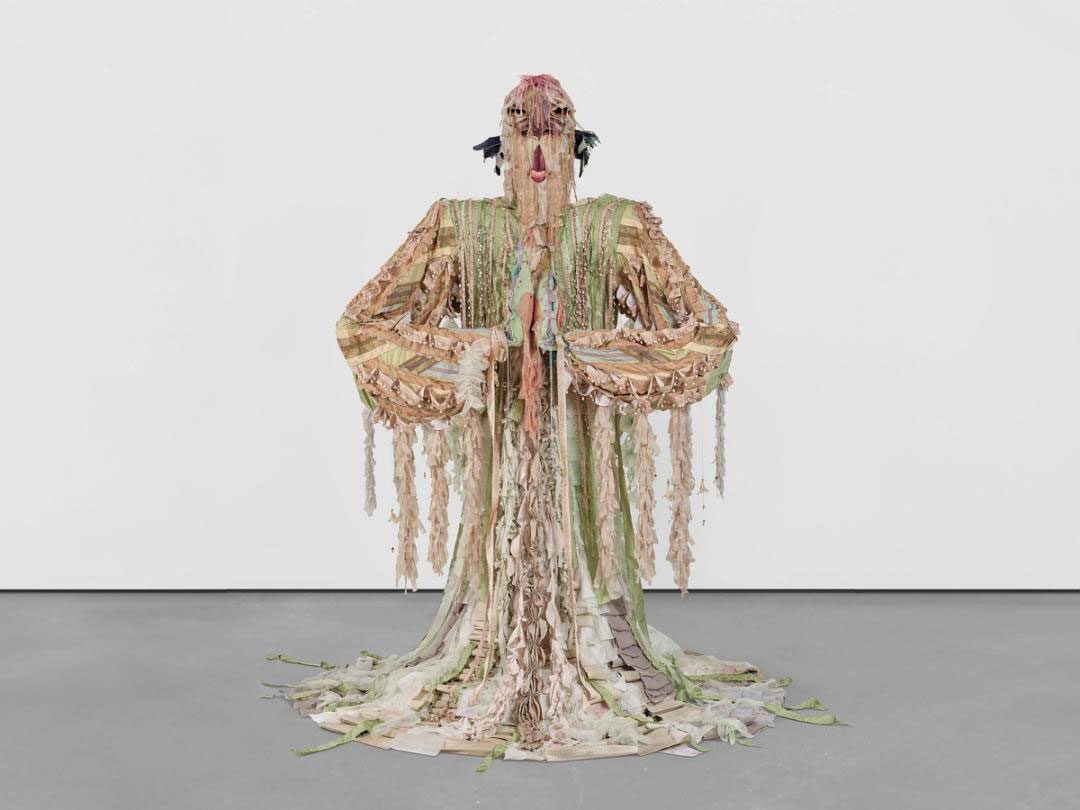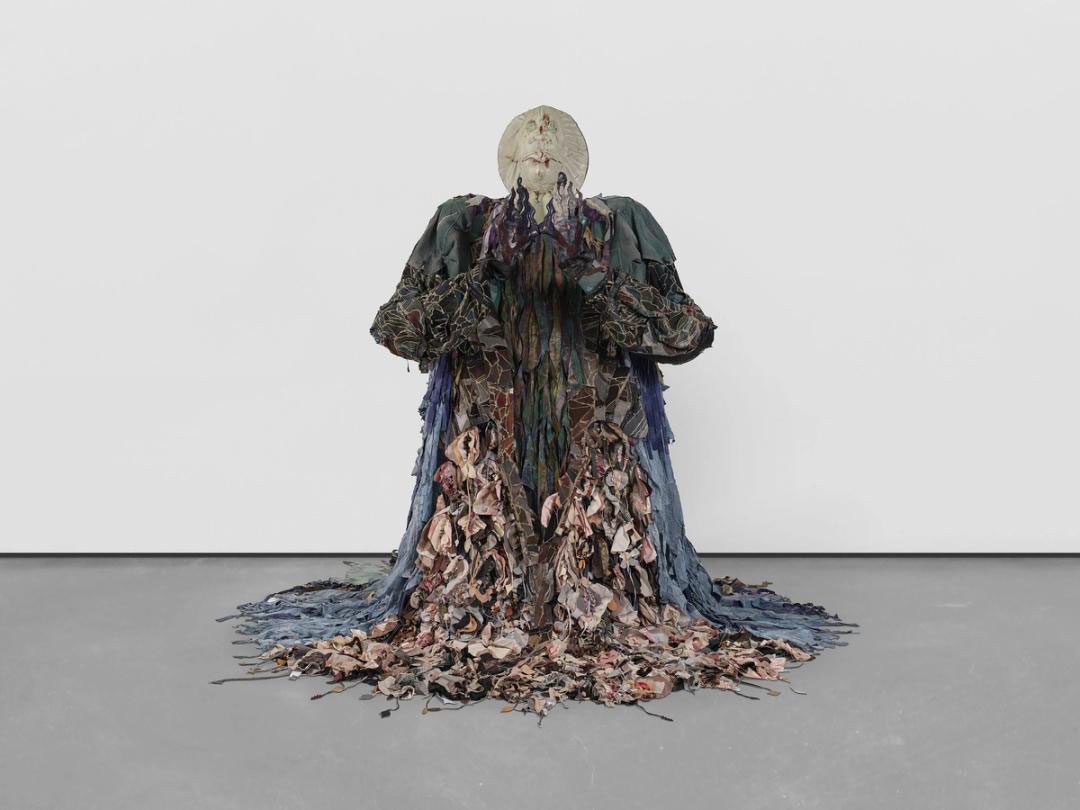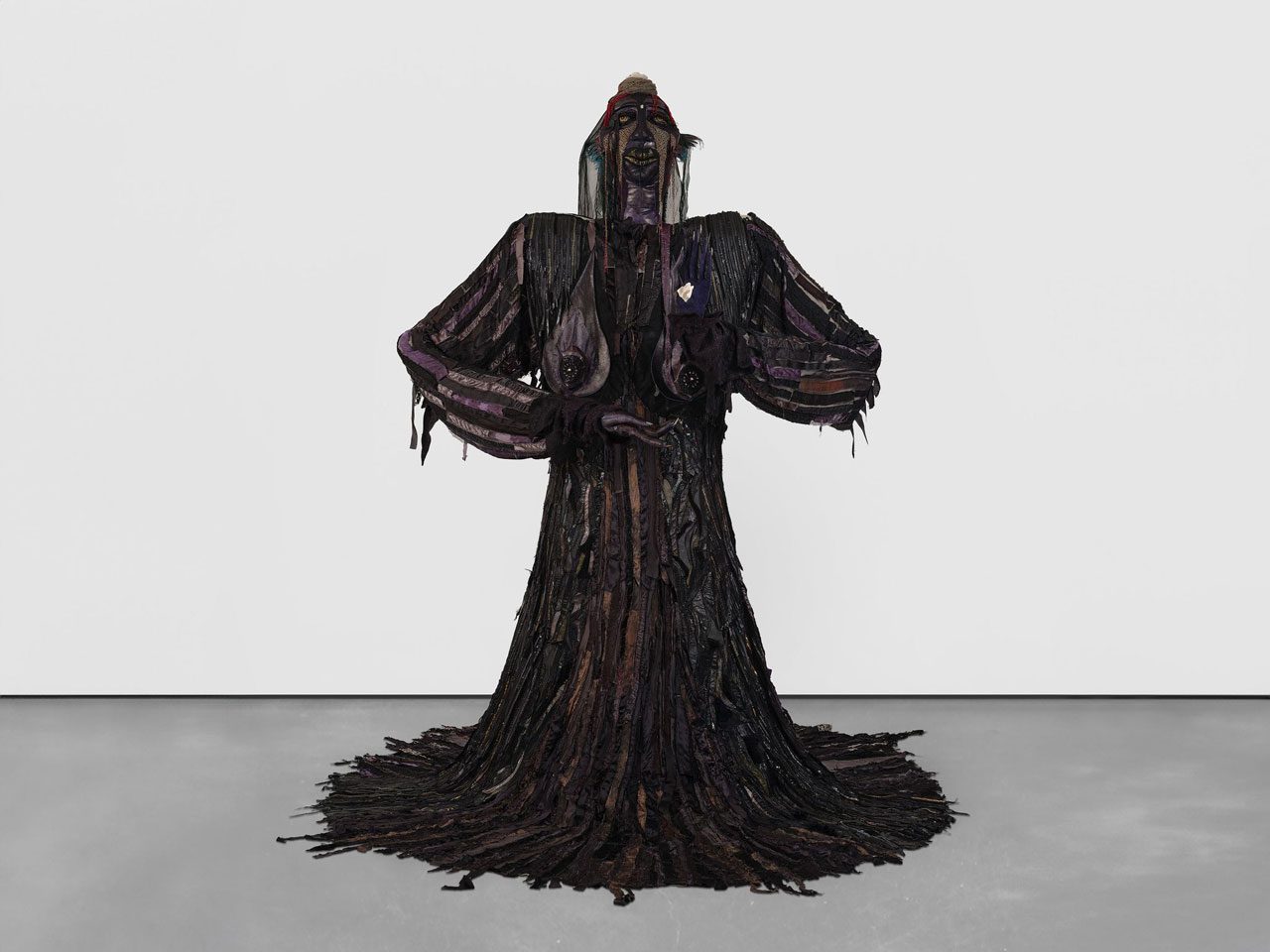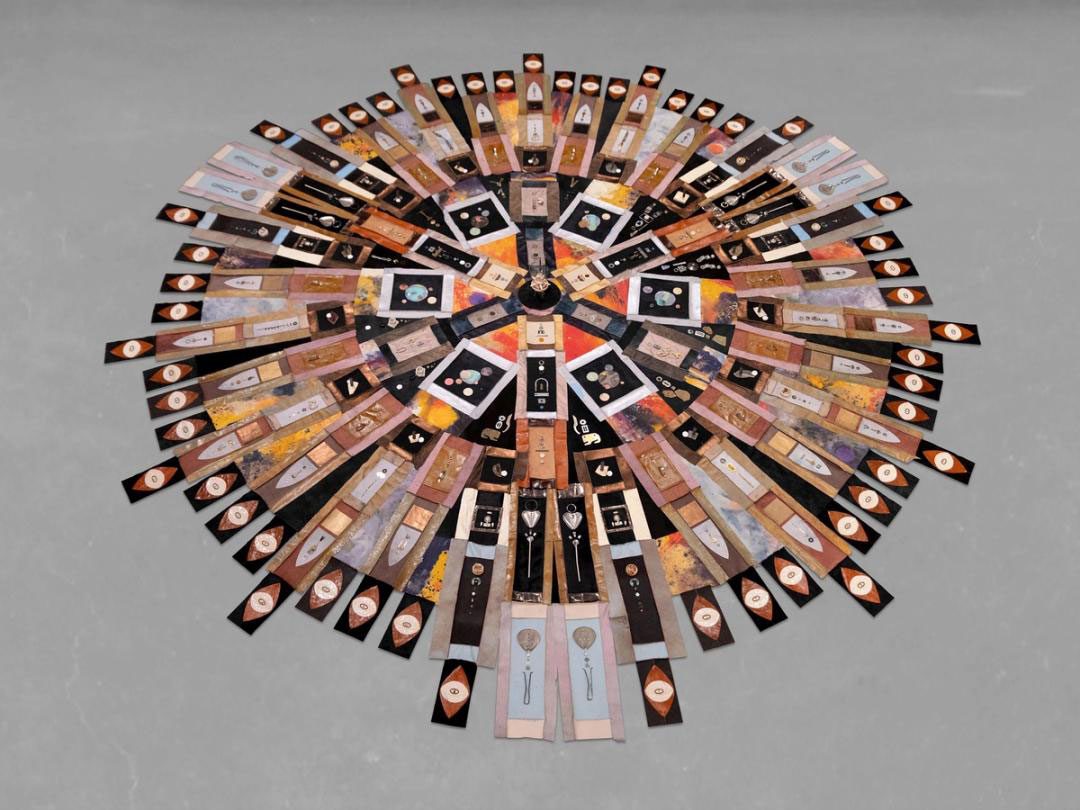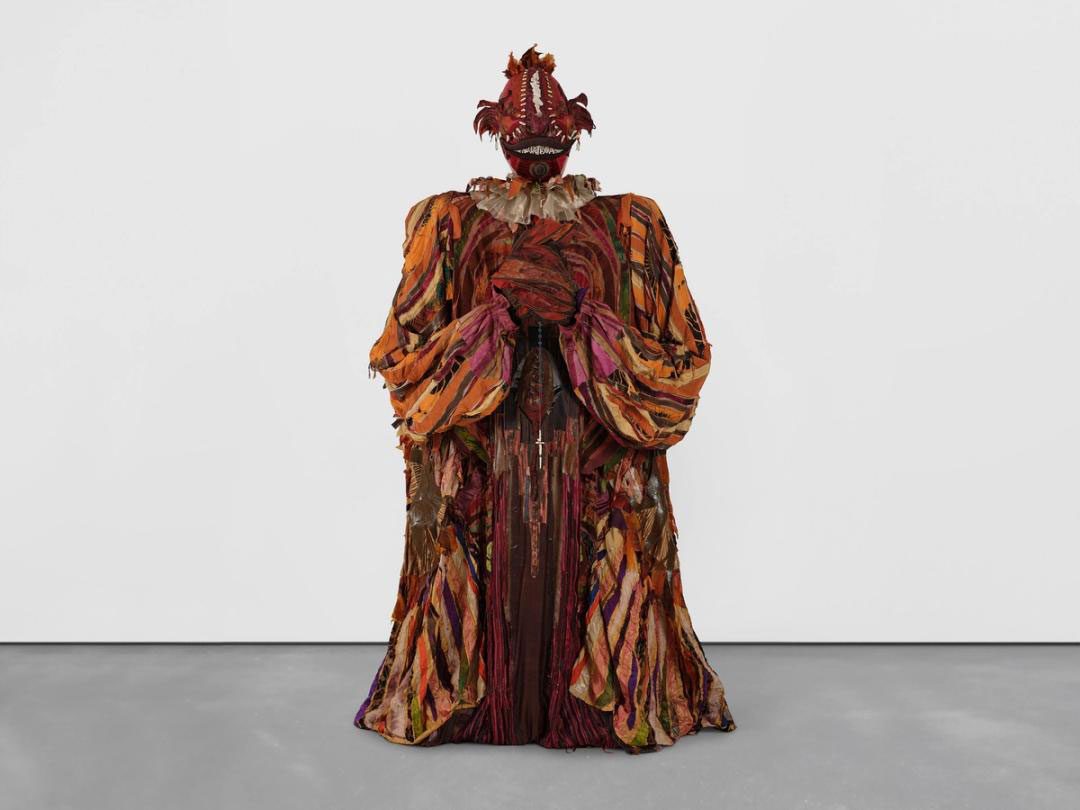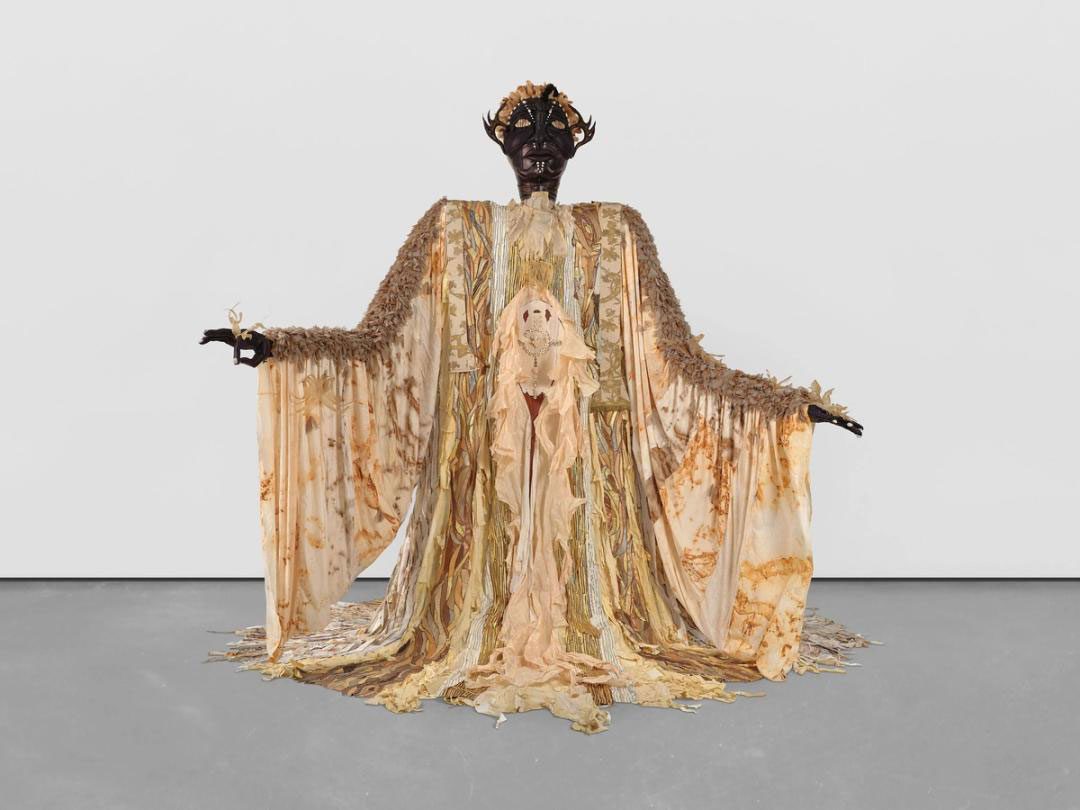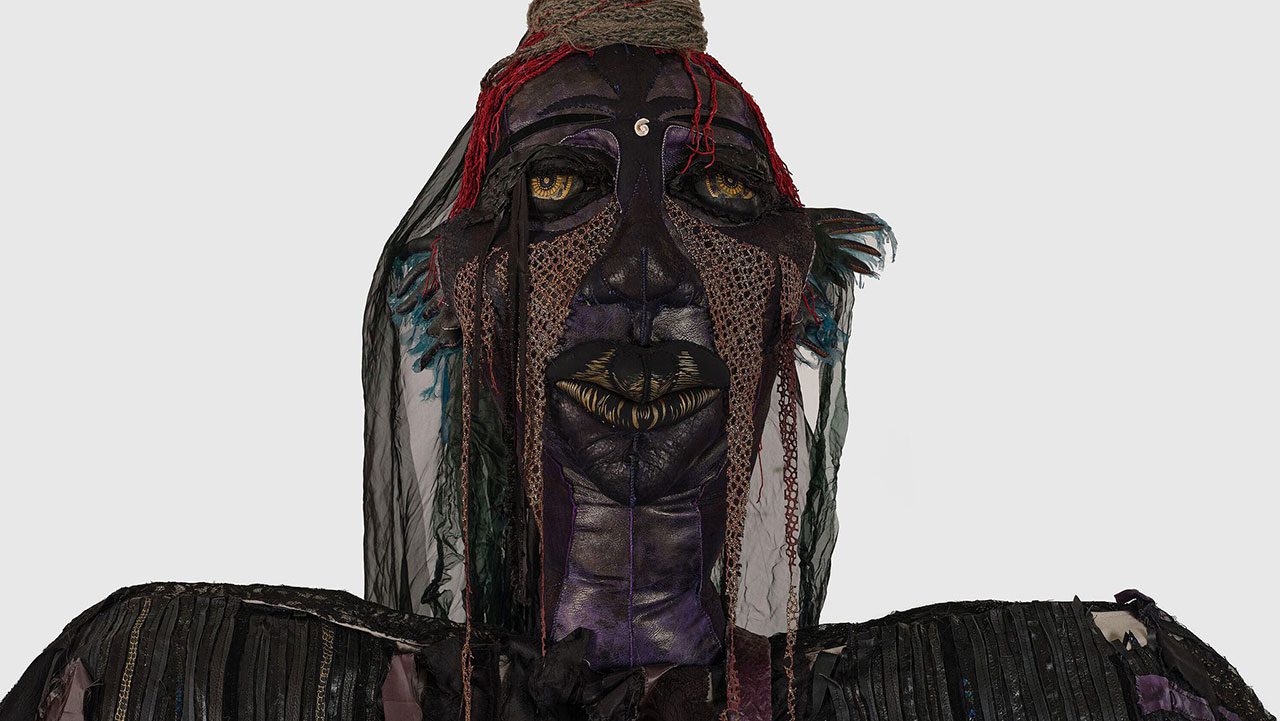ART CITIES: Los Angeles-Tau Lewis
Tau Lewis uses intricate craft processes to transform found textiles into monumental artworks, building a unique iconography informed by African diasporic communities in an act of agency, resistance and healing. Lewis employs the conceptual possibilities of textiles and their real and imagined lineages – considering the past lives of the materials and how their history manifests in their physicality – as a regenerative process through which to examine identity, the body, interdependence and shared histories.
By Dimitris Lempesis
Photo: David Zwirner Gallery Archive
Deeply attuned to the past lives of her materials, Tau Lewis is working in the tradition of Black self-taught artists from the American South, including Lonnie Holley, Thornton Dial and the Gee’s Bend quilters, who have all made do with scraps at hand to construct works of extraordinary expressiveness and vitality. Employing various sculptural techniques, Tau Lewis in her solo exhibition “Scpirit Level” creates colorful, totemic forms that suggest mythical territories beyond our own. In the conception of these anthropomorphic figures, the artist develops respective identities and narratives in an intermediary world that implicates our ancestral pasts, spiritual and cultural similitudes, and multiplanar existences. The exhibition focuses on five monumental sculptures and a circular quilt, all created from salvaged textiles and other found materials. The works in “Spirit Leve” originated in the wake of a major loss experienced by the artist. The forms embody Lewis processing a significant life transition, in which she refigures and repurposes material and emotional inheritances. Through the act of synthesizing found and inherited belongings, she reckons with the ending of an object’s journey as it changes hands, the mysterious space in between these transitions, and its reemergence in a new form. The ocean and marine life have always been a source of fascination for Lewis. Conceived as a portrait of the sea, “The Doula” (2024) explores how the ocean is a site of life and rebirth, as well as one of death and rest. The sculpture’s cape sweeps across the floor as a wave might, intermingled with undersea life such as stingrays and manta rays, its hands open in a gesture of acceptance and openness. Doulas provide guidance, support, and care during significant moments throughout the lifespan, such as childbirth and death. In this way, Lewis sees this personification of the ocean as both a gentle tide and an unprejudiced force, its open palms inviting life and death to coexist. Lewis draws from a wide array of associations (e.g., Drexciyan mythology; the prevalence of stress-induced parturition, or premature birth, in captured stingrays and manta rays; and, time spent in and around the Caribbean Sea near her family’s home in Negril, Jamaica), to imagine a portrait of the ocean as both majestic and destructive. “The Night Woman” (2024) sees Lewis working through ideas of femininity, mystery, and power. The sculpture draws inspiration in part from the apparition in Marlon James’s 2009 novel “The Book of Night Women”. Shrouded in waves of black, gray, and purple fabric, The Night Woman stares out at viewers with an air of intrigue, unknowability, and serenity. In James’s novel, which takes place on a plantation in Jamaica between the late eighteenth and early nineteenth century, a group of enslaved, so-called night women meet in a cave under cover of dark to plan their revolt. Lilith, the book’s protagonist, is followed and possessed by a spirit and must decide whether to remain submissive and obedient to her enslavers, or to burn everything down, embracing her power and fighting in the revolt. For Lewis, The Night Woman represents feminine intuition, an intuition based in community and specific labor practices, but which doesn’t exclude force or violence. Rather, the sculpture is a guiding spirit, one which looks over working women, wielding the power to protect and to destroy in equal measure. In “The Reaper” (2024) Lewis meditates on themes of life and death through her signature oceanic motifs. Fiery tones of orange, red, and purple evoke flesh and the beautiful, vibrant colors of autumn leaves sensing winter’s approach. The artist notes that organisms on the verge of death often explode with color, ending their lives in a flash of beauty. Similarly, humans close to death sometimes experience an equally colorful moment of terminal lucidity. The figure’s head resembles an anglerfish, a deep-sea fish that captures prey using its luminescent fin ray as a lure. The figure’s mouth rests in a wide, toothy grin that is entrancing, menacing, and made up of bright coral fitted together like a jigsaw puzzle. Like death itself, the anglerfish hunts indiscriminately. Just like its undersea counterpart, “The Reaper” is a trickster, luring prey with its bright exterior, poised to strike at a moment’s notice. “The Miracle” (2024), a bright, shimmering figure resembling a jellyfish with hands clasped together in prayer, was the final work conceived for this exhibition, and one representing the joyous optimism of new beginnings. Lewis sees the jellyfish as a symbol of rebirth. When they die, the medusa jellyfish can reaggregate their dead cells into polyps, small growths that eventually become new organisms. In this way, they transcend death in an almost miraculous process. In addition to the large figure, smaller jellyfish are scattered throughout the sculpture, including under each of the figure’s arms. These small jellyfish are made from drumskin on gold threads to resemble a child’s mobile. They have halos made of an ostrich eggshell bead atop a cluster of glass beads that look like tiny planets, suggesting they are each the creator of their own universe in miniature. Where other figures in Lewis’s grouping reflect on themes of violence and death, The Miracle is a testament to the possibility of growth in the face of loss, making it the lightest and most hopeful of the group. In addition to her figurative sculptures, quilts are a signature element of Lewis’s practice. Transforming found fabrics with paint, dyes, and other objects, her tapestry-like quilts display her sustained interest in the deep sea and outer space through the inclusion of seashells and extraterrestrial forms. “The Last Transmission” (2024) lies flat on the ground, bringing the five sculptures in the exhibition together around a central point. The quilt’s repeated sequence of architectural forms recalls diagrams or taxonomical systems used to organize the natural world. In the center, a found- metal assemblage points upward, suggesting the form of a launch tower for a space shuttle. The piece’s title may speak to a radio communication for astronauts, a message for aliens to save a dying planet Earth, or a final goodbye to a loved one. The title is taken from one of the last songs produced by the Detroit techno duo Drexciya, whose music constructed the influential myth of an undersea civilization of the same name that has been a recurrent source of inspiration for Lewis and numerous other contemporary artists.
Photo: Tau Lewis, The Night Woman (detail), 2024, Steel, enamel paint, acrylic paint and finisher, repurposed leather, suede, fur, shagreen, assorted fabric, leather, natural dyes, cow bone, conch, Abalone shell, stones, jute, coated nylon thread, and coated cotton thread, 130 x 137 x 106 inches (330.2 x 348 x 269.2 cm), © Tau Lewis, Courtesy the artist and David Zwirner Gallery
Info: David Zwirner Gallery, 616 N Western Avenue, Los Angeles, CA, USA, Duration: 13/2-29/3/2025, Days & Hours: Tue-Sat 10:00-18:00, www.davidzwirner.com/
